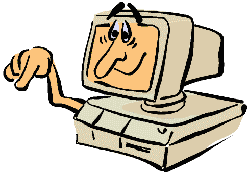
| Site Navigation LIFE Home Page Computer Page Return to Techno Tips Contact Us |

Starting Up

Starting Up. When you press your computer's power button to boot up, the PC needs to get oriented. The computer reads several files to remind itself what it should be doing and to perform a complex series of tests to make sure all its hardware components are working properly. |
- When the
computer is booted up, an electrical current travels to the microprocessor
and resets the chip to clear its memory. During the reset, the
microprocessor sends a command to the computer's read-only memory
(ROM) chips to run the computer's basic input/output system (BIOS)
boot program.
- The boot program connects the hard drive, loading Win95/98's core system files through the microprocessor and loading the device driver software needed to allow communication between the operating system and the PC's hardware. Win95/98 has the microprocessor test all of the hardware via the system bus. Win95/98 also double-checks its list of hardware components, making sure no new components have been added.
- Win95/98 follows by again contacting the hard drive and loading the graphics, files and font files needed to properly display the system's desktop.
- After communicating with the video card to create the desktop environment Win95/98 opens the Startup folder. Any programs that may have been placed in the folder are immediately accessed from the hard drive and loaded through the microprocessor into RAM. Win95/98 is then ready for use.
- The boot program connects the hard drive, loading Win95/98's core system files through the microprocessor and loading the device driver software needed to allow communication between the operating system and the PC's hardware. Win95/98 has the microprocessor test all of the hardware via the system bus. Win95/98 also double-checks its list of hardware components, making sure no new components have been added.
Return to Understanding & Using